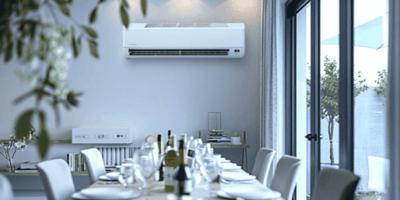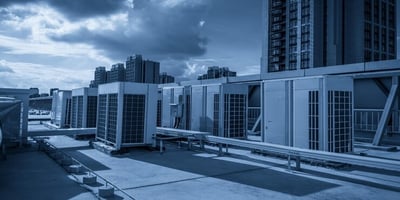How Often Should Commercial Air Conditioning Units Be Serviced?
Running an AC unit costs businesses an average of $3.81 per hour during peak summer months. Yet 73% of commercial system failures trace back to one simple oversight: inadequate maintenance. Regular servicing doesn't just prevent breakdowns - it cuts operating costs by 15-40% and extends system life by up to 7 years.
Most facility managers face a common dilemma: balancing optimal indoor air quality with budget constraints. When a 5-ton commercial HVAC system runs at just 10% below optimal efficiency, it wastes up to $1,800 annually in unnecessary power consumption. Let's explore how proper maintenance keeps your system running at peak performance while protecting your bottom line.
Why is Regular Service Essential for Commercial AC Units?
Neglected commercial cooling systems tell an expensive story. When a 20-ton commercial HVAC system runs even slightly below optimal efficiency, it burns through an extra $2,400-3,600 annually in wasted energy. A 1mm layer of dust on condenser coils - barely visible to the naked eye - forces the system to work 20% harder, dramatically increasing power consumption and component wear.
Emergency Repairs vs. Planned Maintenance
The financial impact extends far beyond utility bills. Businesses lose an average of $3,200 per hour when air conditioning units fail during peak summer months. Emergency repairs cost 3-5 times more than scheduled maintenance, while rush-ordered replacement parts carry premium pricing that eats into profit margins. Even more costly? The reputation damage when climate control failures disrupt customer experience or force temporary closures.
Efficiency Over Time
Regular maintenance dramatically shifts these numbers. Properly serviced systems maintain 95% of their original energy efficiency throughout their lifespan, compared to a 30-40% efficiency drop in neglected units after just 3-4 years. Clean air filters alone improve efficiency by 5-15%, while proper refrigerant levels ensure optimal cooling without straining components.
Impact on Workplace Performance
Beyond pure efficiency, maintained systems directly impact workplace performance. Studies show that indoor air quality significantly affects cognitive function - workers in well-ventilated spaces score 61% higher on cognitive tests. Proper AC unit maintenance removes airborne contaminants, controls humidity levels, and ensures consistent air circulation - all crucial for employee health and productivity.
Extended Equipment Life
Component lifespan tells an equally compelling story. Regular maintenance extends compressor life from 7-8 years to 12-15 years. Fan motors last 2-3 times longer with proper belt tension and lubrication. These aren't just maintenance costs - they're investments that pay dividends through reduced replacement expenses and consistent performance.
Prevention vs. Repair
Most importantly, routine inspections catch small issues before they escalate. A loose electrical connection spotted during maintenance costs minutes to fix but could trigger system-wide failure if ignored. Low refrigerant levels indicate leaks that, when caught early, cost a fraction of the compressor replacement they'd eventually cause. Professional HVAC services can spot these warning signs months before they develop into critical failures.
.jpg?width=800&height=400&name=91162%20(1).jpg)
Recommended Service Frequency for Commercial AC Units
Commercial spaces have unique demands on their heating and cooling systems. Unlike residential units that might run seasonally, commercial systems often operate continuously, demanding more frequent attention. Your maintenance schedule shouldn't just follow generic guidelines - it needs to match your specific operational patterns.
High-Traffic Retail and Restaurants
These environments need quarterly servicing at minimum. When your commercial HVAC system battles constant door openings, kitchen heat, and heavy foot traffic, components wear faster. Food service areas face unique challenges - airborne grease particles coat coils and filters, reducing efficiency by up to 30% if left unchecked. Retail spaces with frequent inventory deliveries see higher dust levels, demanding more frequent filter changes.
Healthcare and Laboratory Facilities
Monthly inspections become crucial where indoor air quality directly impacts health and safety. Operating rooms, clean rooms, and research facilities require precise temperature and humidity control. Even minor fluctuations can compromise sterile environments or research integrity. These facilities often need specialized filtration systems checked twice as often as standard commercial settings.
Office and Professional Spaces
Standard office environments typically require bi-annual major services, with quarterly filter changes and inspections. Modern office buildings with sophisticated air conditioning units need regular calibration of their building management systems. Server rooms and IT-heavy areas demand extra attention - their cooling requirements remain constant year-round, and equipment-dense spaces have less room for error in temperature control.
Industrial and Manufacturing
These environments push AC units to their limits. Heavy machinery, process heat, and airborne particles create unique challenges. Monthly inspections become necessary when:
- Manufacturing processes generate excessive heat
- Production areas contain dust or particulates
- Temperature-sensitive equipment requires precise cooling
- 24/7 operations leave little room for system recovery
Seasonal Considerations
Even within these categories, service frequency should adjust with seasonal demands. Peak cooling months require closer monitoring of:
- Refrigerant levels and pressure
- Condenser coil condition
- Electrical load patterns
- Drainage systems
- Compressor performance
This prevents unexpected failures when your system faces its toughest workload.
Signs That Your Commercial AC Needs Immediate Service
Sound Changes Tell a Story Strange noises from your commercial HVAC system aren't just annoying - they're expensive warning signals. Grinding sounds often mean bearing failure, while rattling indicates loose components. A properly functioning system hums consistently. When you notice squealing, clicking, or banging, you're hearing components on the verge of failure. Quick intervention can prevent a $300 bearing replacement from becoming a $3,000 compressor rebuild.
Performance Red Flags
Uneven cooling across your space signals that air conditioning units are in distress. When some areas feel tropical while others freeze, you're likely facing:
- Ductwork issues limiting airflow
- Failed zone control components
- Refrigerant balance problems
- Thermostat calibration errors A consistent 3-4 degree temperature variation between zones demands immediate attention from HVAC services.
Energy Bills Spike
Sudden increases in power consumption often precede major system failures. When your energy efficiency drops, components are struggling. A 15-20% jump in energy costs, without corresponding weather changes or occupancy increases, suggests internal problems like:
- Refrigerant leaks forcing longer run times
- Dirty coils making heat transfer inefficient
- Failing capacitors causing motor strain
- Clogged filters restricting airflow
Moisture and Humidity
Issues Water spots near your units or unusual humidity levels indicate serious problems. Proper air conditioning removes about 10-15 gallons of water daily from your space. When this process fails, you'll notice:
- Condensation on windows and surfaces
- Musty odors suggesting mold growth
- Water stains on ceiling tiles
- Sticky air despite cooling operation
Reduced Airflow
When indoor air quality suffers from weak airflow, your system is crying for help. Checking air output at registers can reveal:
- Blockages in ductwork
- Failing blower motors
- Frozen evaporator coils
- Severely dirty filters
Response Time Lag
A healthy system responds quickly to thermostat changes. When your space takes increasingly longer to reach desired temperatures, you're witnessing system decline. This often means:
- Compressor efficiency loss
- Refrigerant charge problems
- Control board issues
- Sensor failures
.jpg?width=800&height=400&name=16279%20(1).jpg) How to Create a Service Schedule for Your Commercial AC?
How to Create a Service Schedule for Your Commercial AC?
Baseline Assessment
Success starts with understanding your commercial HVAC system's current performance. Spend two weeks tracking how your system behaves - from power consumption patterns to temperature consistency across different zones. Note how quickly your space reaches desired temperatures and measure humidity levels throughout the day. These readings become your baseline for measuring future performance and spotting early warning signs of decline.
Understanding Your Facility's Demands
Your building's unique characteristics shape your maintenance needs. A restaurant's air conditioning units face different challenges than a retail store's system. Consider your daily operating hours, peak usage periods, and seasonal variations. Factor in special requirements for sensitive equipment or inventory storage. Even your location matters - coastal areas need more frequent corrosion checks, while dusty regions demand extra filter attention.
Creating Your Maintenance Calendar
Your maintenance schedule should flow with your business operations, not against them. Monthly checks focus on the basics - filter conditions, drain lines, and general system health. Quarterly sessions dig deeper into system performance, with thorough cleaning of components and verification of energy efficiency levels. Seasonal preparations ensure your system can handle extreme weather demands without faltering.
Documentation and Professional Partnership
Detailed record-keeping transforms good maintenance into great maintenance. Track every service visit, repair, and system modification. These records help identify patterns and prevent recurring issues. Partner with HVAC services providers who understand your business's unique heating and cooling needs. Look for teams that offer comprehensive reporting and 24/7 emergency support - because system issues rarely respect business hours.
Smart Monitoring
Modern indoor air quality monitoring tools can alert you to problems before they become critical. These systems track temperature variations, humidity levels, and system performance in real-time. When paired with regular professional inspections, this data helps prevent unexpected breakdowns and maintains optimal efficiency year-round.
Smart Maintenance: Your Business's Bottom Line
Regular maintenance of your commercial HVAC system isn't just about preventing breakdowns - it's about protecting your business's bottom line. Well-maintained air conditioning units consistently deliver optimal energy efficiency, often paying for their own maintenance costs through reduced power consumption and extended equipment life.
The key lies in consistency. Working with qualified HVAC services ensures your system receives proper attention when needed, helping avoid costly emergency repairs while maintaining optimal indoor air quality. Consider maintenance as business insurance - a small, regular investment that protects against major unexpected expenses while ensuring smooth operation year-round.


































.jpg)


.jpg?height=200&name=shutterstoc%20(3).jpg)
.jpg?height=200&name=photo_2025-01-17_21-00-09%20(1).jpg)


